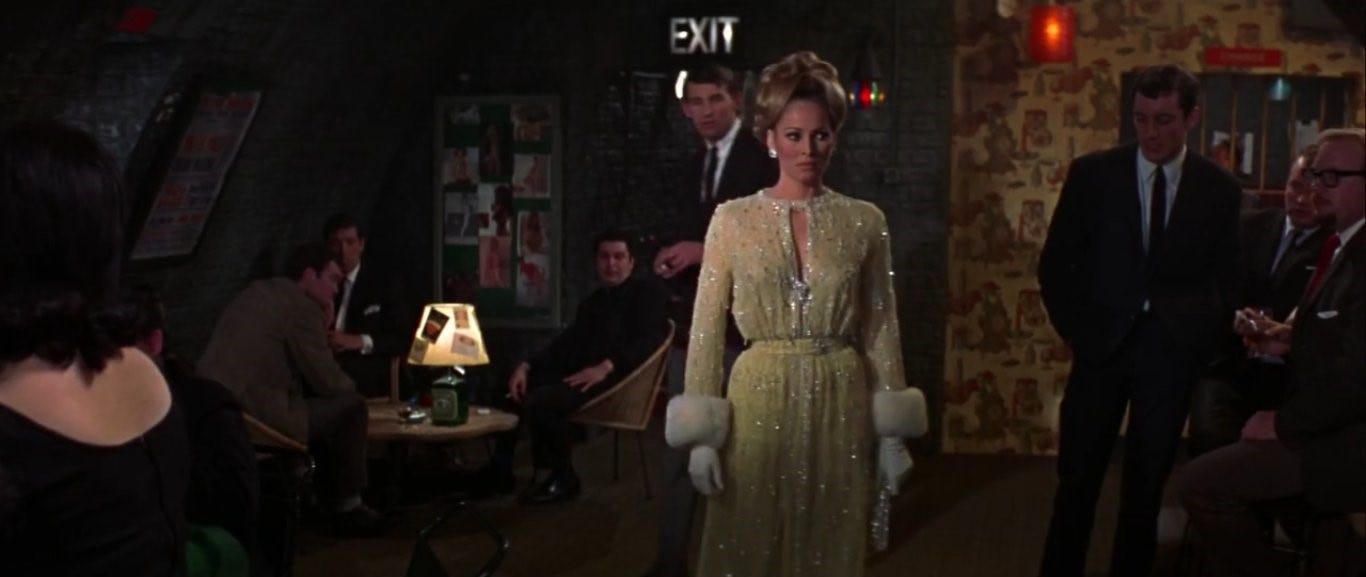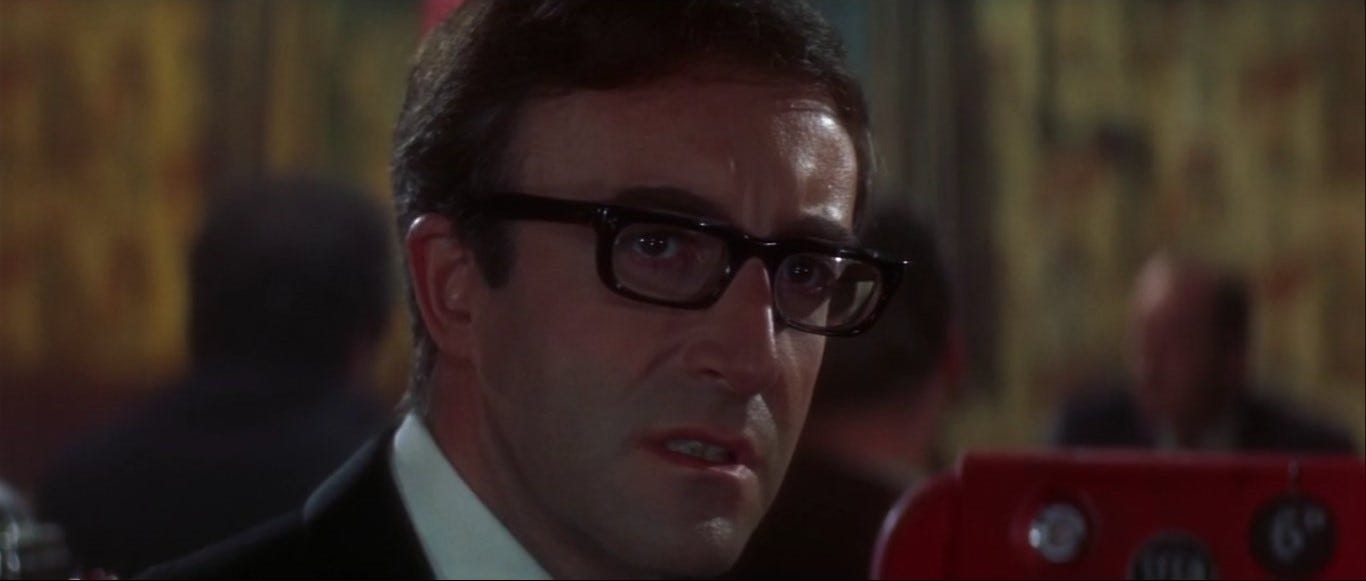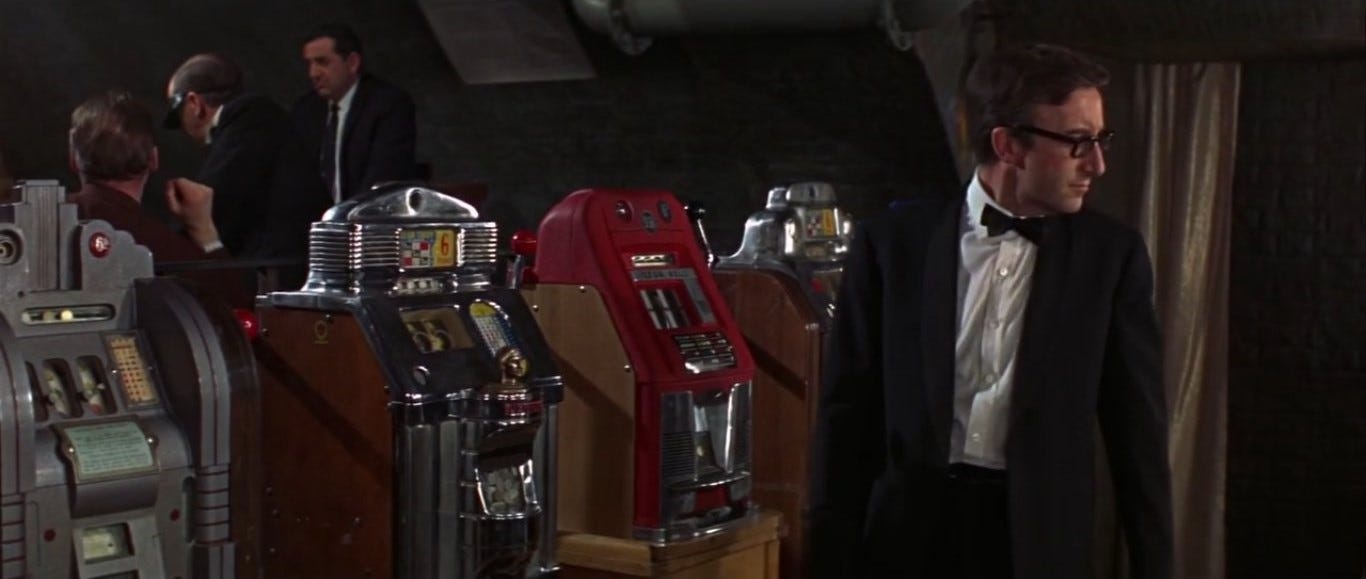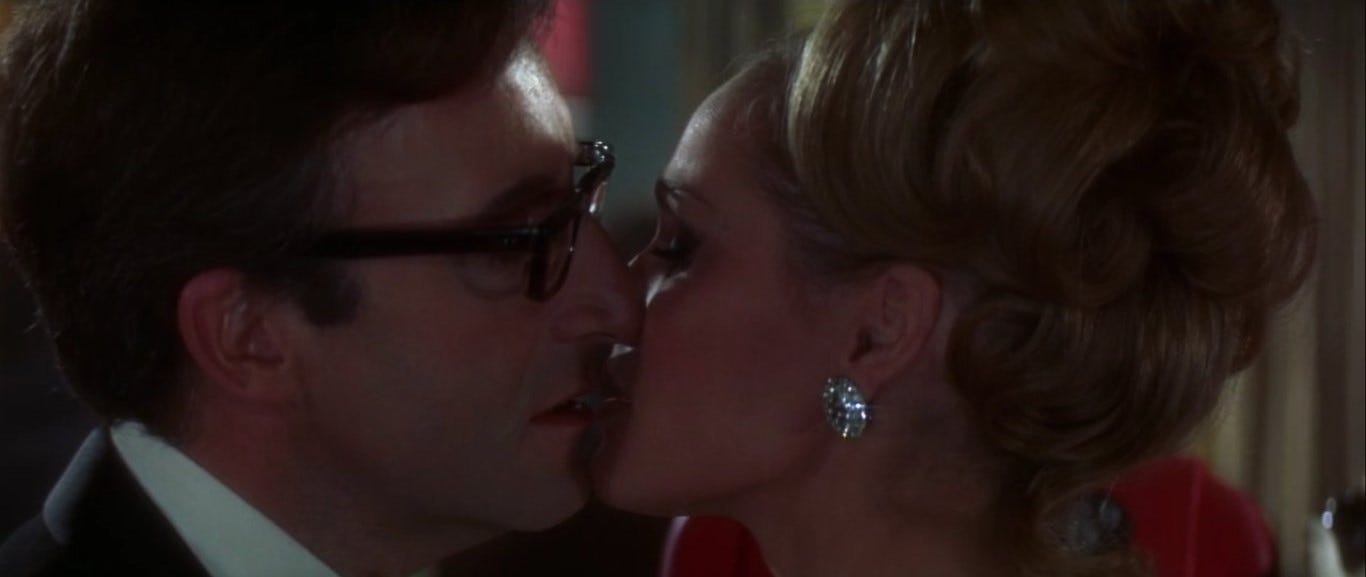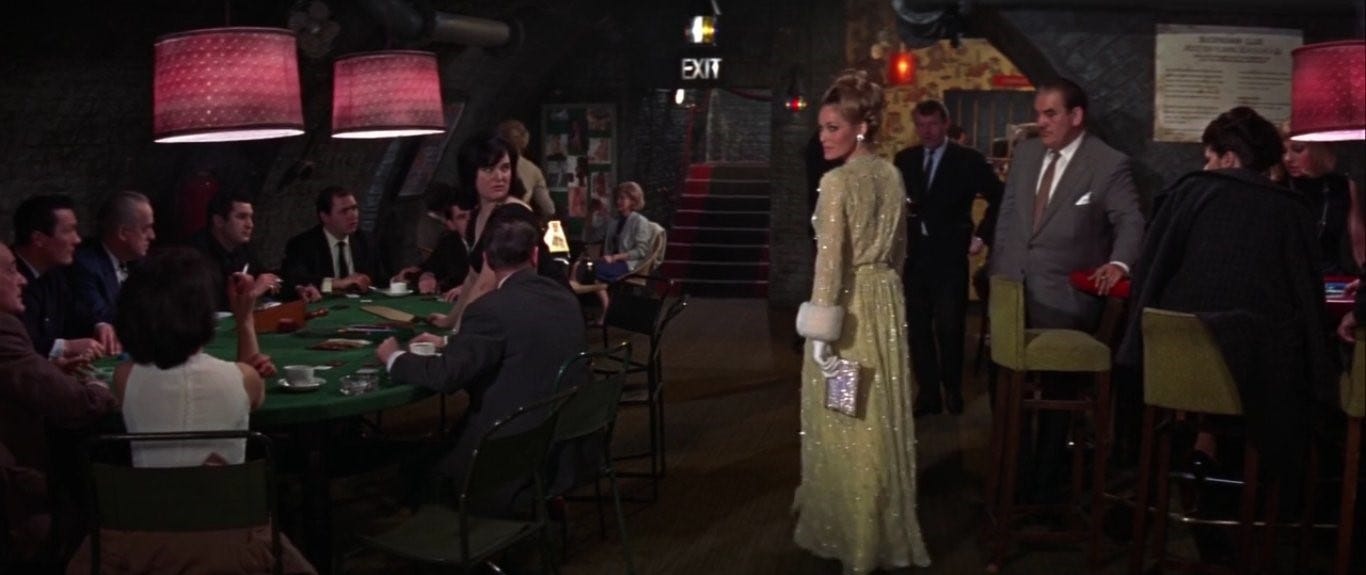Clubs in Film: 'Casino Royale' (1967)
This is a terrible, terrible film; utterly dreadful from start to finish. But it’s also something of a guilty pleasure, gleefully burning up talent, encompassing six directors (including John Huston), innumerable co-writers who mostly refused to be credited (including the late, great Ben Hecht), and an all-star cast embracing the likes of David Niven, Peter Sellers, Ursula Andress, Deborah Kerr, Orson Welles, and even Ronnie Corbett.
Ian Fleming’s debut 1953 novel makes no mention of clubs - Casino Royale is mostly set in the eponymous casino in the fictional town of Royale-les-Eaux, northern France; and although clubs featured prominently in some of the later James Bond novels, Fleming had not yet invented this part of Bond’s demi-monde.
This film version had an improbably circuitous route into existence, to do with Fleming selling the screen rights to his first novel many years before he sold the rights to most of the rest of his books to Cubby Brocolli & Harry Saltzman, the makers of the “official” Bond films. And by the 1960s, those separate Casino Royale rights had ended up with independent producer Charles K. Feldman. It was Feldman who hit upon the idea of not rivalling the “official” film series, but making Casino Royale as a spoof, starring Peter Sellers.
Sellers’ character in Casino Royale is not James Bond. In fact, he plays one Evelyn Tremble, the run-of-the-mill author of “a few paperback editions”, on how to play baccarat. But in the film, he is hired by the British secret service to assume the role of James Bond, and to play baccarat under Bond’s name.
(Never the most stable of actors, Sellers later stormed off the set with only about half of his part filmed - which is why the resulting film makes little narrative sense and has such an abrupt ending, trying to use Sellers’ footage while working around his absence. But the middle section of the film, featuring Sellers, corresponds to what was originally intended, as a relatively straightforward adaptation of Fleming’s novel.)
So where do clubs come in?
Gambling in Britain in the 1960s
We are first introduced to Evelyn Tremble by a voiceover from David Niven’s Sir James Bond, who says he has, “a dossier on a man who works at the Buckingham Club, his name is Evelyn Tremble.” It should be clarified that Tremble does not literally work for the Club, but that he makes his living by gambling at the Club.
This was a conspicuously contemporary idea - many forms of gambling remained illegal in the UK until the reforms of 1960, which prompted a wave of clubs such as the Clermont Club, Quent’s, and the revived Crockford’s. Such clubs took advantage of the Betting and Gaming Act 1960 (which legalised games of skill), to become licensed premises. Such casinos typically took the member-based structure of a private members’ club, to offer newly-legalised forms of gambling. They could vary from the fashionable, high-end establishments named above, to the distinctly shady. While these establishments were clubs in the eyes of the law, they were less noted for any sense of conviviality - the club model was for them often a mere administrative convenience. And the more-or-less full-time professional gamblers who hung around these clubs (like the fictional Evelyn Tremble) were often shady figures, on the fringes of society.
The club scene
The club scene in Casino Royale is very short - barely 90 seconds. It consists of Evelyn Tremble (unsuccessfully) trying his luck on the Buckingham Club’s slot machines, only for Ursula Andress’s Vesper Lynd to walk in and rapidly seduce him into visiting her at her home that night. The dialogue is as follows:
Vesper Lynd: Mr. Evelyn Tremble?
Evelyn Tremble: Yes, that's right.
VL: Isn’t Evelyn a girl’s name?
ET: No, it’s mine, actually. Do you know me from somewhere?
VL: Your book: Tremble On Baccarat? I’ve studied it very closely. At night, in my bed.
ET: Is that where you study it?
VL: There are several passes you describe in your book, which I don’t fully understand.
ET: Which passes are these?
VL: Oh, they’re all marked. I would have to have my book; your book.
ET: And my book is in...?
VL: My bed. [She pulls the lever on the nearby slot machine, leans in to kiss him, but stops short of doing so, as they hear the sound of change pouring out of the slot machine.]
ET: You’re winning tonight.
VL: I’ll send my car for you. [Tremble watches her leave, whistling silently.]
The Buckingham Club
What we see of the Buckingham Club is far from impressive or salubrious. It is a gloomy, windowless basement, with a clearly-marked fire exit, and unsightly pipes jutting out from the ceiling. Most of the walls are bare brickwork; one noticeboard advertises boxing matches, while another has pin-ups of strip-tease artists. The baccarat table looks like a fold-out, pop-up table, with flimsy plastic chairs - a far cry from the sumptuous furnishings of Les Ambassadeurs in Dr. No (1962). There is a bar to one side, with the slot machines in a corner, and a hint of a cloakroom in the background. Beyond that, there do not seem to be any further rooms, much less any kind of a restaurant. It is a bare-bones kind of a place.
Although Tremble wears a dinner jacket - and a distinctly outmoded one at that, with its early 1960s thin lapels, that were decidedly out of fashion by 1967 - most of the rest of the clientele are in various business suits and day dresses. They would not have passed the “dark suits only” dress code for men at a modern club like Annabel’s, which saw George Harrison refused admission in the 1960s.
Most telling is the obvious hostility of the clientele. When Ursula Andress’s Vesper Lynd enters and leaves in a sumptuous evening dress, she is looked upon by men and women alike with disgust, which seems to combine mistrust at a newcomer with contempt at someone so conspicuously overdressed for a gambling dive, and all the accompanying insinuations made. And every face in the room turns to look at her.
Much of the 1967 film of Casino Royale is a surreal, zany, psychedelic, madcap romp. This was in large part necessitated by a production that grew ever more out of hand, with a runaway budget and cast.
But the scene in the Buckingham Club is different. It is atmospheric, seedy, and low-key. It echoes the small-scale casino clubs found up and down Britain in the late 1960s. It points to a very different ambience for the film as originally conceived - one that would have stressed the awkward modesty of Evelyn Tremble. He is a meek man, more accustomed to working out statistical probabilities on low-stakes games of chance, than playing the charismatic leading man in exotic surroundings. This is a point emphasised later in the film, when he looks gobsmacked on first walking into the vast Casino Royale of the title, and is asked by Vesper Lynd if anything is wrong: “Oh, nothing. It’s just a bit different from the Buckingham Club, that’s all.”
You can view the full and varied backlog of Clubland Substack articles, by clicking on the index below.
Index
Articles are centred around several distinct strands, so the below contains links to the main pieces, sorted by theme.




